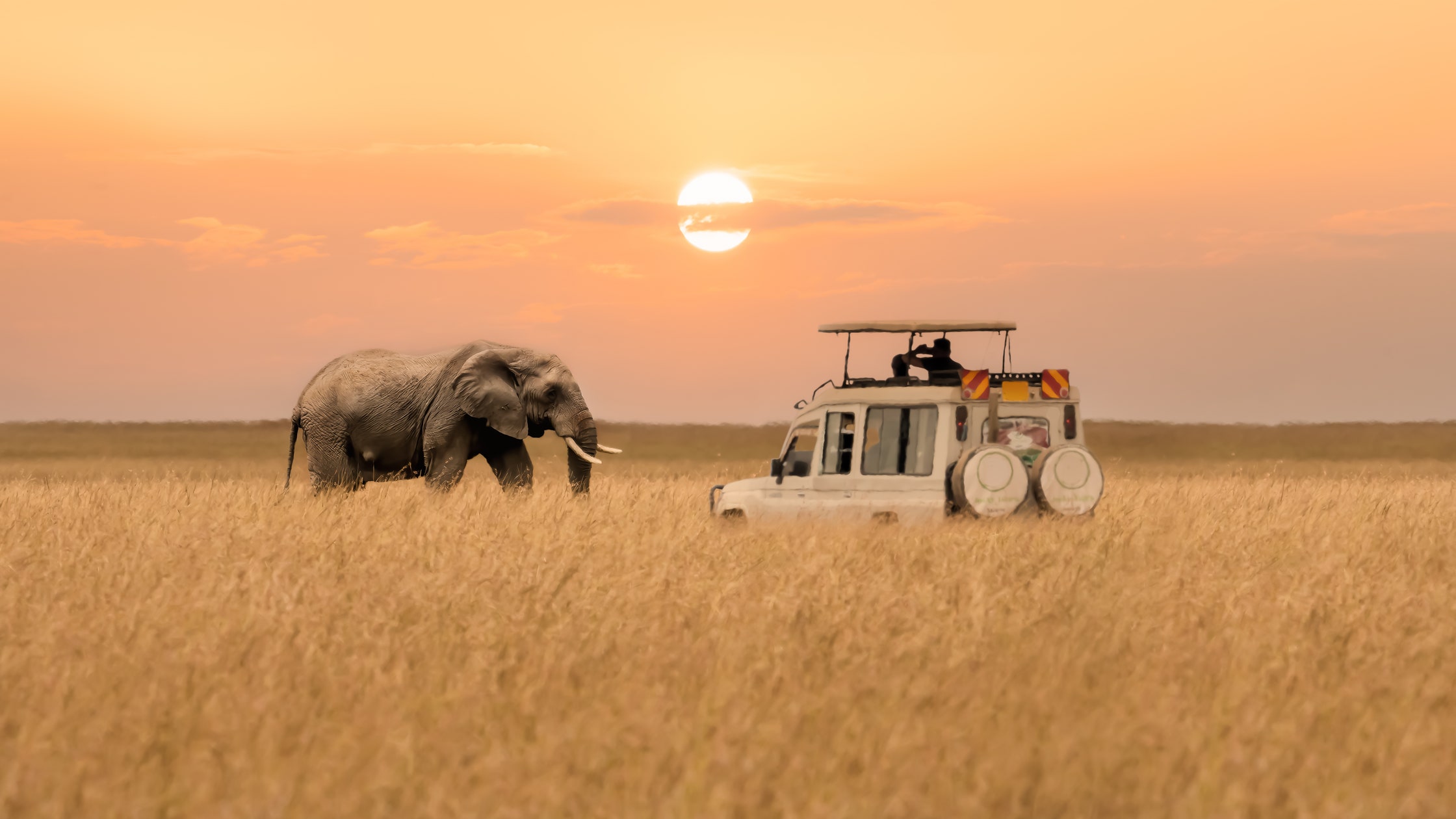When creating a packing list for safari, the brief is to blend functionality and a modicum of style into about 15 kilograms – roughly the luggage allowance on the bush planes that whisk safari guests to lodges, though it might be even less. By all means, splash out on fancy gadgets or study stills from Out of Africa to create a mood board for a capsule wardrobe, if that sparks joy.
What luggage should I take on safari?
To carry your essentials, choose a soft-sided suitcase or duffel bag; nothing with a hard shell. “Even though it’s tempting to take your much-loved wheelie,” says writer Harriet Compston, “this can fit into the light aircraft much more easily.” Conservation writer Sarah Marshall goes everywhere with fabric or tarp-based water-resistant luggage from Eastpak or Osprey, especially Osprey’s Rolling Transporter 60. For a day bag, safari writer Jane Broughton swears by the Sealand moonbag made from recycled nylon and sailcloth. “It’s just big enough for my passport, purse, and phone while traveling, then great for game drives and walks to store sunglasses, lip balm, SPF, and tissues close at hand.” Those carrying extra lenses for cameras or binoculars will need a larger day pack.
What clothes should I pack for a safari?
Comfort is crucial, and these days, as Jane Broughton notes, “stylish athleisure wear is perfectly acceptable.” A safari wardrobe should comprise comfortable layer items in shades of neutral earth tones, creams, and greens that will suit chilly mornings in an open vehicle, blazing midday sun, and everything in between. Avoid camouflage (associated solely with the military in some countries) and bright colors; additionally, steer clear of dark colors, metallic fabric, and blues as the tsetse fly is attracted to them.
Must-have clothing items for a safari holiday
- On the savannah, opt for stretchy trousers, jodhpurs, cargos, or soft drawstring trousers in khaki or earthy muted shades, paired with t-shirts – “Those that contain polygiene are great,” advises Sarah Marshall.
- UPF50 Patagonia tops and long-sleeved linen shirts (that don’t require ironing) in similar colors. “I love zip-off cargo trousers, which are shorts and trousers in one,” adds Sarah Marshall.
- Sunrise and sunset will demand a light, neutral-colored safari jacket as temperatures will drop. A lightweight fleece or cashmere hoodie is handy for cooler moments, and a thin Uniqlo puffer jacket or primaloft jacket that scrunches up to nothing is recommended. Safari maestro Lisa Grainger takes a water- and windproof thin jacket that rolls into a ball.
- Necessary accessories include a roomy but lightweight scarf, versatile for sun or dust protection during game drives, used for coverage when a cool breeze sets in, or wrapped around hair to protect it from dust.
Footwear considerations for safari
- Footwear often divides opinions. Some prefer ankle boots for support and protection while others choose trail shoes for agility. Hiking boots are ideal for walking safaris that involve hours of trekking through the bush but aren’t necessary for quicker tracking experiences. It’s advisable to pack different shoes for camps, such as breathable sandals or flip-flops for hot days.
- Don’t overlook socks; Lisa Grainger recommends Smartwool socks, blending merino wool for comfort.
- High-quality polarised sunglasses help reduce glare and eye strain when observing wildlife. Don’t forget your swimming costume if the lodges have pools.
- Extra undies are practical, as many lodges won’t wash them. Bring a little packet of detergent for an overnight wash and dry.
What gadgets should I take on safari?
- Get your SLR camera and telephoto lenses ready; a mirrorless camera is ideal for capturing action. “I’d recommend a Nikon Z6i with a 100-400mm lens,” says Sarah Marshall.
- A GoPro is a fun addition to game drives and great for capturing bouncy moments.
- Binoculars are essential, especially in parks where off-roading is prohibited. “The best are Swarovski Optik, with specifications of 8×40 and 10×42; these are invaluable,” advises Frances Geoghegan.
- A Leatherman tool can come in handy for various situations. “Just remember to take it out of your hand luggage at airport security,” cautions Will Bolsover.
- A powerful torch is necessary for navigating through the dark in the bush. “The Fenix LD30 is compact, with five brightness settings,” states Will Jones.
- For remote areas, a satellite phone can be useful, particularly for adventures into wilderness regions.
What toiletries should I take on safari?
- Instead of bringing new travel medication, taking a St John’s Ambulance first aid kit is recommended as it is compact and easy to pack.
- Rehydration salts can be lifesavers during travel. Common ailments can often be alleviated by balancing salts and sugars.
- Consider sunscreen products that are biodegradable and environmentally friendly, like those made by Ultra Violette.
- Bring essential items like motion-sickness tablets for flights, along with insect repellent containing at least 30% Deet.
Extra pro tips for your next safari
- Check the requirements for anti-malarial medication specific to your destination.
- Some operators have launched their own ranges of safari clothing that are suitable for various environments.
- When tracking chimpanzees or gorillas, layering with moisture-wicking base layers, thin fleeces, and rain jackets is crucial, particularly in high-altitude forests.
Meta Description: Discover essential packing tips for your safari adventure. Learn what clothing, footwear, gadgets, and toiletries to pack for an unforgettable experience in the wild.




